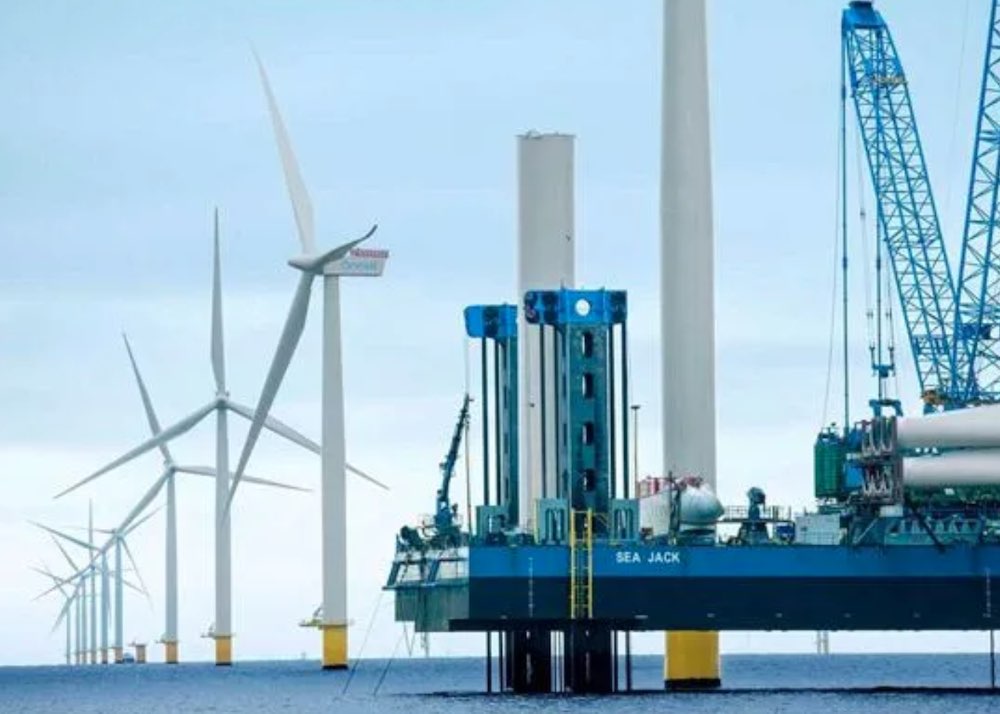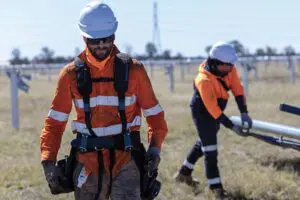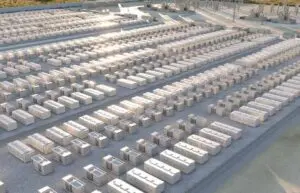The United States’ offshore wind industry remains in a state of flux as major players Ørsted, BP, and Equinor shuffle their plans, even as the US government approved funding for floating offshore wind in California.
While the offshore wind industry in regions such as Europe and Asia continue to experience setbacks due to global inflation and increasing material costs, their relative maturity and importance to national decarbonisation efforts have helped ensure necessary support.
In the United States, however, where only two small offshore wind projects are currently in operation with a combined capacity of 41MW, these same pressures have hamstrung the industry’s early days.
European energy companies Ørsted, BP, and Equinor suffered a combined $US5 billion in writedowns on offshore wind projects in development along the east coast of the US in 2023, as existing power sales contracts were unable to cover the cost of building and financing projects after the effects of inflation and material costs rewrote development budgets.
However, almost 1GW of new capacity is expected to be brought online in 2024 as commercial-scale projects are brought online in New York and Massachusetts.
Developers are also hoping to revive projects with cancelled or threatened power sales contracts by bidding their projects in upcoming capacity solicitations in states including New York, New Jersey, Massachusetts, and Connecticut.
Among the projects set to be repositioned for these upcoming solicitations is Danish wind energy giant Ørsted’s 966MW Skipjack Wind project, under development off the coast of the Delmarva peninsula on the northern east coast of America.
Ørsted announced late last week that it had withdrawn from the Maryland Public Service Commission orders approving the Skipjack 1 and 2 projects and would reposition the project for future offtake opportunities.
Development and permitting continues for the combined project, including submission of its updated Construction and Operations Plan to the Bureau of Ocean Energy Management (BOEM). However, the original power sales contract was “no longer commercially viable because of today’s challenging market conditions, including inflation, high interest rates and supply chain constraints,” Ørsted explained.
“Today’s announcement affirms our commitment to developing value creating projects and represents an opportunity to reposition Skipjack Wind, located in a strategically valuable federal lease area and with a state that’s highly supportive of offshore wind, for future offtake opportunities,” said David Hardy, executive vice president and CEO of region Americas at Ørsted.
“As we explore the best path forward for Skipjack Wind, we anticipate several opportunities and will evaluate each as it becomes available. We’ll continue to advance Skipjack Wind’s development milestones, including its construction and operations plan.”
At the same time, European energy companies Equinor and BP jointly announced that they would end a development partnership of 4.6GW worth of US offshore wind projects, with each company walking away with two projects apiece.
BP will take ownership of Equinor’s 50% stake in the Beacon Wind US offshore wind projects, located in federal waters between Cape Cod, Massachusetts, and Long Island, New York, while Equinor will take ownership of BP’s 50% stake in the Empire Wind US offshore wind projects located off Long Island.
The two companies have also agreed to terminate its power sale agreement for the Beacon Wind 1 project, opening the way to reapply to future solicitations.
These announcements came days after the US Department of Transport announced it would provide a $US426.7 million grant for the development of the Humboldt Bay Offshore Wind MVP (Minimum Viable Port) project.
Designed as a modern marine terminal, the Humboldt Bay Offshore Wind MVP would be built specifically to provide transport, import, staging, preassembly, final assembly, launch, in-water construction, and long-term maintenance for floating offshore wind turbines and projects.
“Offshore wind energy is essential to combating the increasingly devastating effects of climate change as California strives to reach 100 percent carbon-free power,” said Alex Padilla, Democratic senator for California.
“This substantial investment in the Harbor District will not only boost economic development in the Humboldt community, but also move us closer toward our clean energy and grid reliability goals.”
The US government auctioned off 583 square miles off Humboldt Bay and Morro Bay in California, including five sites that are expected to be developed into floating offshore wind farms.










